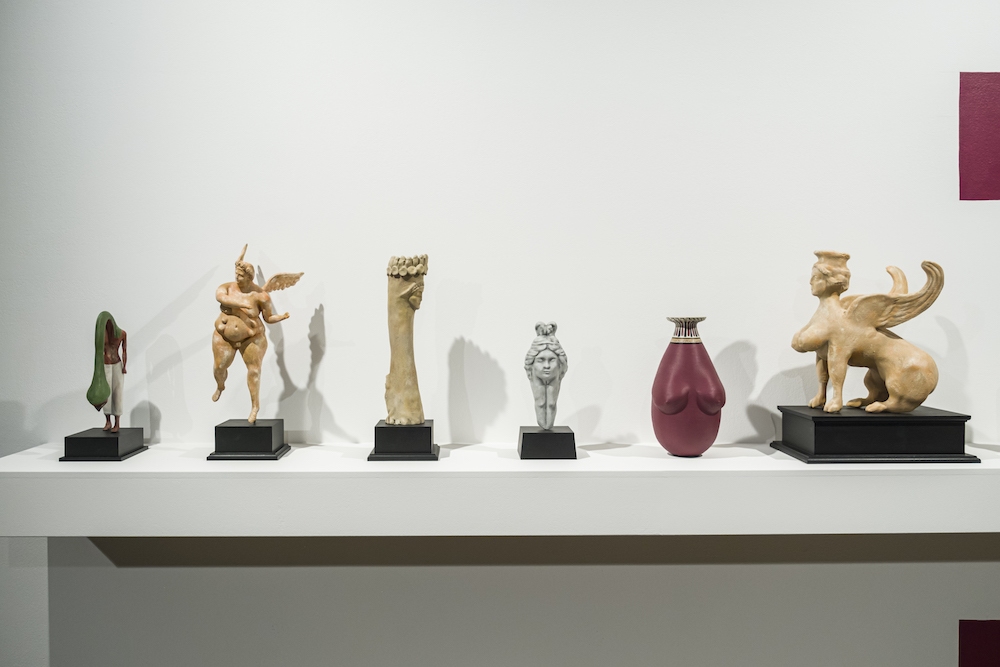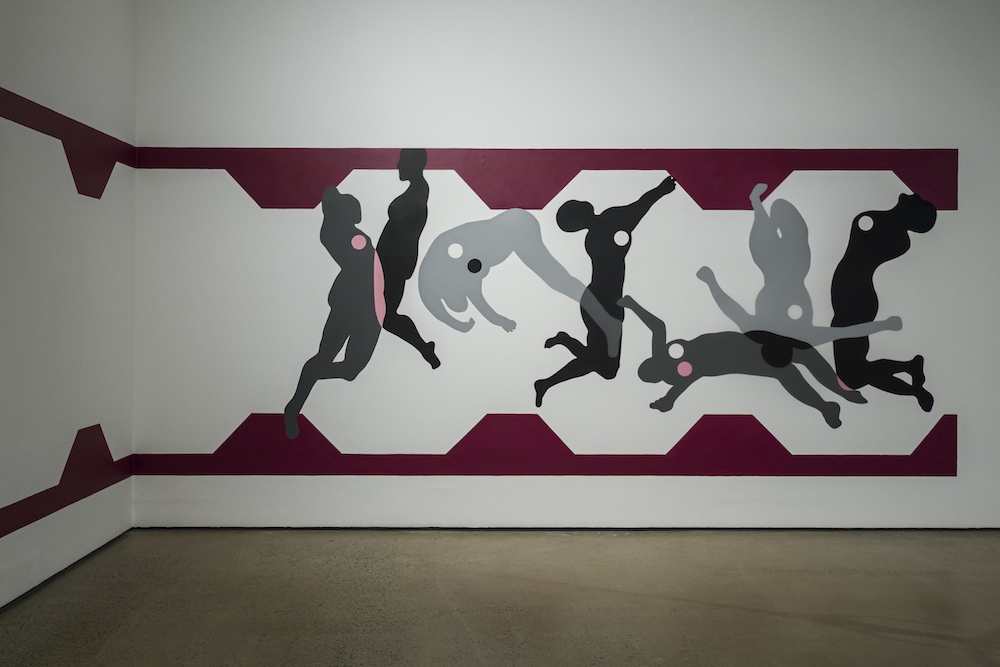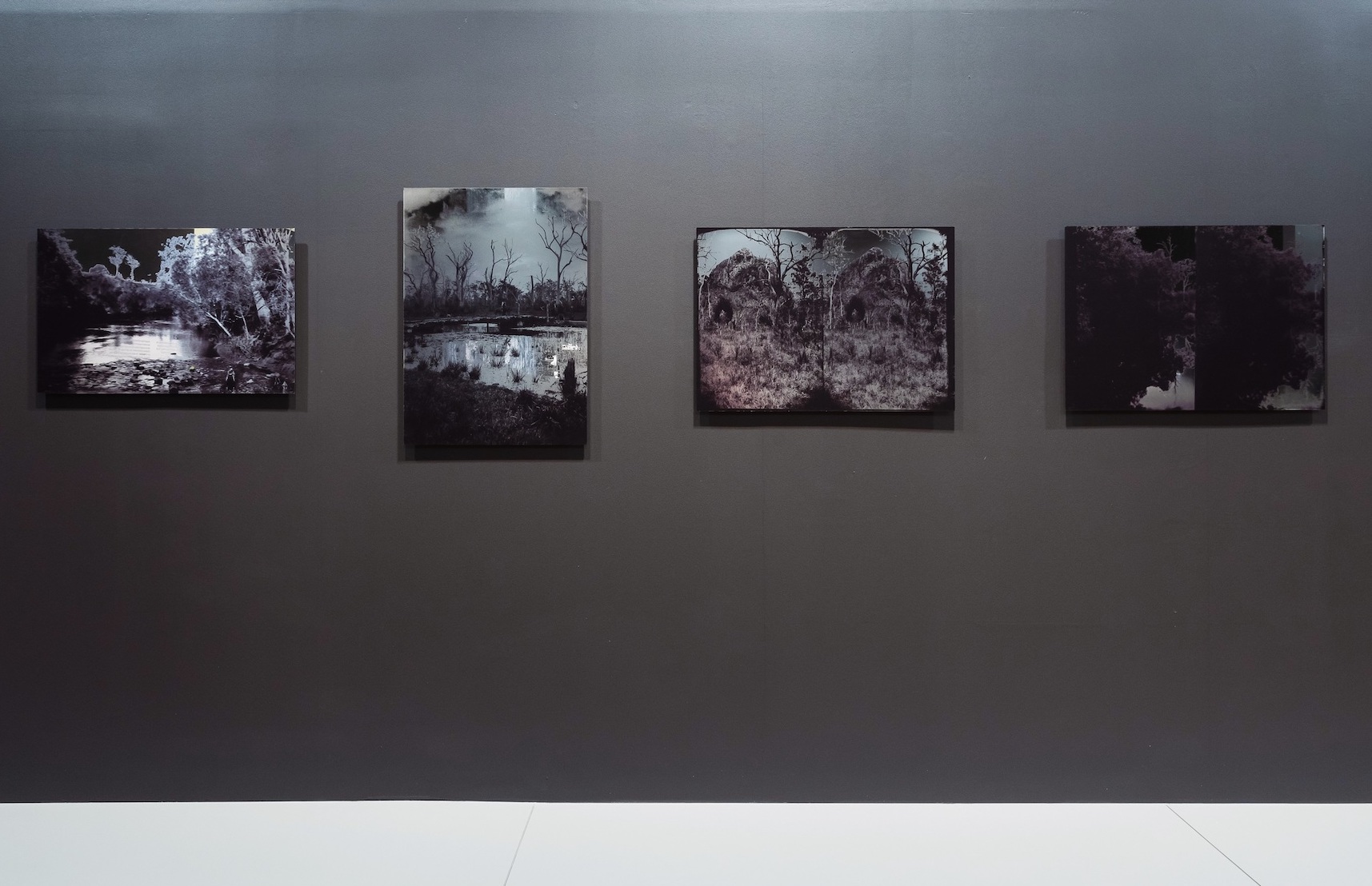In her exhibition The Interior, on display at the Institute of Modern Art until October 1, Natalya Hughes considers the aesthetics of psychoanalysis through the life and work of its founder, Sigmund Freud (1856–1939). Visitors are invited into a playful and stylised consulting room, replete with fantastical treatment chairs and tufted floor rugs, evoking the Austrian doctor’s famous study.
The installation and its subject matter represent a departure for Hughes, who is best known for highly detailed paintings that deconstructart historical (male) representations of the female form and dress. Given this, Freud might seem an unlikely choice for the artist’s attention however, ascurator Tulleah Pearce notes in her helpful exhibition text: “Hughes is especially interested in the construction of women in psychoanalysis, as this was something that challenged Freud during his career”. The artist explores Freud’s women ‘problem’ through a close reading of the case studies the analyst made of his patients and the dreams they disclosed. He posited that psychoanalysis could reveal our unconsciousness and thus expose our inner selves.
In previous bodies of work, Hughes has appropriated existing images, ranging from Ukiyo-e woodblock prints to Willem de Kooning’s ‘Woman’ series, altered in Photoshop to remove figurative elements or add decorative patterns. For The Interior, Hughes instead translates Freud’s written descriptions of his patient’s physical and psychological symptoms into images of her own making, a process the artist said was both “liberating and terrifying”. The resulting motifs, including an eye, black snakes, rats, white wolves and a burning house, are repeated across a trio of upholstered couches that resemble abstracted female bodies, as well as scattered floor rugs. Visitors are actively encouraged to take off their shoes, sit or lie down on the lounges and speak to one another, in a performative restaging of Freud’s talking cure.
There is precedent in Hughes’ oeuvre for The Interior’s sculptural focus, most notablyThe After Party, a reimagining of Judy Chicago’s seminal feminist installationThe Dinner Party(1974-79) for Contemporary Australia: Women at the Queensland Art Gallery / Gallery of Modern Art (2012). In that exhibition, viewers were allowed to look at, but not touch, Hughes’ lumpy fabric-enveloped table and chairs set inside a mirrored and carpeted room. Hughes’ recent painting exhibitions have also featured fabric appendages and plaster casts of breasts and dildos; however even then the body remained largely implied through its absence.
The Interior is a far more engaging and immersive proposition.Occupying approximately two thirds of the IMA’s largest gallery, the empty, unlit space around the installation amplifies the theatrical, stage-like quality of Hughes’ project. The artist has collaborated with other makers and fabricators to great effect in realising the exhibition. In addition to furniture and rugs, there is a wall mounted display of facsimile classical sculpture, based on objects from Freud’s collection of antiquities. Hughes’ 3D printed (with the assistance of Max Athans) versions are characterised by the addition of exaggerated breasts. Ironically, the only painting on display, a mural of silhouetted female forms in various states of hysteria, was made by painting students under the supervision of Hughes’ studio assistant, Savannah Jarvis.
Over the exhibition’s opening weekend, social media feeds were full of people posting selfies in Hughes’ bodily chairs. While this type of interaction will no doubt remain popular throughout The Interior’s display, those looking for a more meaningful engagement should plan to visit on a weekday morning. Experiencing the installation alone, on one of the custom treatment chairs, allows for quiet moments of genuine introspection and self-reflection.
Hamish Sawyer is an independent curator and writer based in Meanjin (Brisbane).






